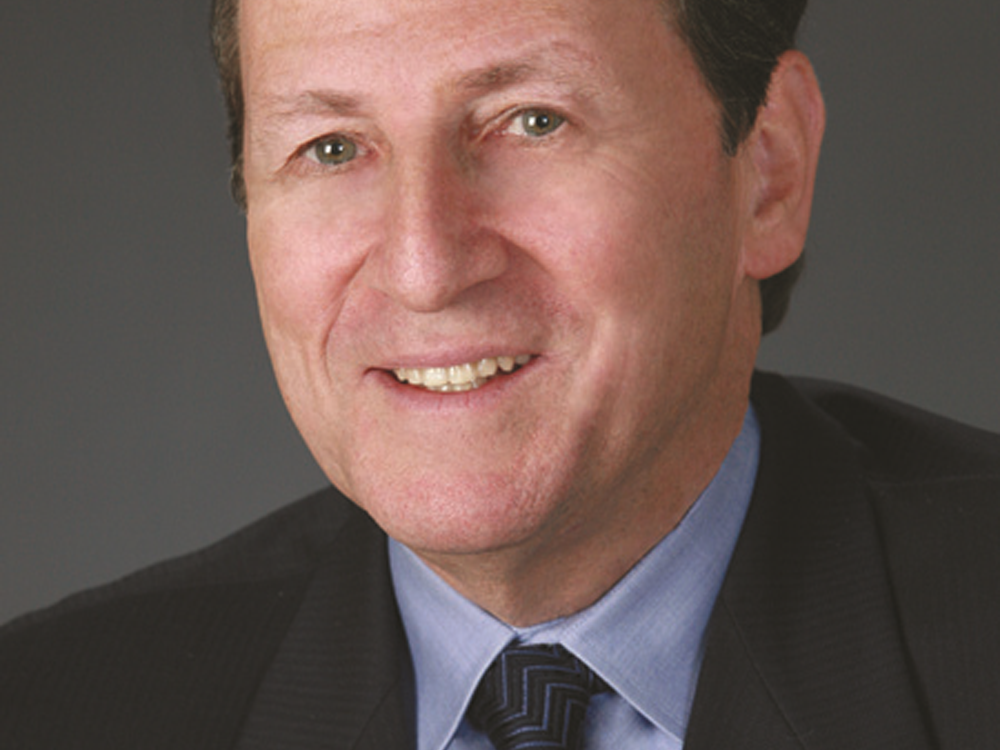Larry Berman and I had dinner together at the First Party Claims Conference in Boston last month. It was a very informative discussion.
Based in Newton, Massachusetts, Larry has been a public adjuster for over forty years and runs a very successful small firm with cases taken all over the country. Larry is also a past president of NAPIA. For public adjusters in a smaller practice, he is somebody to learn from.
I always thought that Larry was an attorney who gave up the practice to become a public adjuster. Instead, he studied law but never became a lawyer. His son, Jonathan Berman, did graduate from law school and works with Larry in their two-person public adjusting firm.
Here is my interview with Larry Berman:
With over 40 years of experience in the field, could you share how you view the role of public adjusters has evolved over the years and what key changes you’ve witnessed in the industry?
I believe that the role and importance of public adjusters has grown tremendously over time. The increased level of scrutiny and review that company adjusters face from insurance companies means that consumers need representation on their side now more than ever. Over the years, I think that consumers have become more savvy and well informed. They understand that carriers are hyper-focused on the bottom line and marketing campaigns, more so than paying enough to make policyholders whole after a loss.
You hold public adjuster licenses in 24 states. What unique challenges and opportunities have you encountered while handling claims across different states?
As public adjusters, we provide a service to people who need help after a loss. In assisting clients from different states, you can really appreciate different cultures, customs, and ways of life that are found throughout the country. At times, the regional differences can be challenging. However, I find these to be wonderful opportunities to meet and learn about people that I might not have a chance to if I had a traditional 9-5 office job. In particular, the company adjusters who operate in these states can be very different. In the Northeast, claims handling can be more adversarial at times, while in the Midwest and South, the claims process can be more collaborative.
You’ve established strong relationships with insurance companies and their consultants. Can you discuss the importance of these relationships and how they benefit your clients?
The relationships with carriers, company adjusters, and their experts are critical to the claims process. It takes decades to develop these relationships, which are founded on respect and understanding. Although we serve parties with different interests, the claims process does not need to be nasty or confrontational. We all have a job to do, and a little empathy can go a long way. At the end of the day, as has been said, the only good file is a closed file.
How has your educational background, including your time at the University of Buffalo and Suffolk University Law School, influenced your approach to public adjusting?
I strongly believe in education and learning as a lifelong pursuit. As time goes by, things change, and we must evolve along with the times. If you stop learning, then you become a dinosaur. I don’t want to become extinct like them.
Regarding Suffolk Law School, I really began to think differently about the world. My son, who also attended Suffolk Law, often says that the answer to all questions is “It depends.” What he means is that you need to think critically and consider all variables before formulating an answer. From law school and the lawyers I worked with, I learned to try to think from all points of view before providing a response. This type of thinking has been invaluable while handling property claims, which are never cut and dry.
As a former president of the National Association of Public Insurance Adjusters and chairman of its board of directors, what initiatives or changes did you focus on during your tenure? What do you see as the public adjusting industry’s major challenges?
While holding various offices & as NAPIA president, I focused on improving the variety and depth of continuing education. An important turning point occurred when NAPIA started recruiting outside speakers in addition to using its own members.
Currently, the challenges I see include attracting new members to NAPIA. An infusion of young adjusters would bring new ideas and creative approaches to claims handling.
Additionally, I believe that the next major challenge will be the integration of artificial intelligence (AI). During the Covid-19 pandemic, we noticed far more adjusters handling claims from their desks instead of firsthand in the field. AI could take this a step further and move towards the removal of human adjusters in the claims process altogether.
Virtual Adjusters, in conjunction with requests that insureds take photos of damages, upload them to a portal, and then have a computer attempt to create a building repair estimate or a contents inventory claim, could have disastrous outcomes for policyholders. It is one thing to have consumers self-checkout at a convenience store. It is quite another to have consumers with no property claims experience provide proper documentation for claims that could total hundreds of thousands of dollars, if not millions.
Could you share an example of a particularly complex claim you’ve handled and how you navigated its challenges?
In 2019, we handled a twenty million dollar claim in Abaco, Bahamas, as a result of Hurricane Dorian. A New England-based real estate client called needing help with this huge hurricane claim. Because of the size and complexity, we needed to bring in a team to work on it. The coverage was complex with British policies and Lloyds adjusters. We teamed with Rick and Dick Tutwiler’s team because they had a lot more experience working in the Bahamas. They had a team of experts ready to go, and the result could not have been better from the client’s perspective.
This example shows how public adjusters, especially those from smaller firms, can team up with other reputable colleagues. This is a method we use when dealing with more complex claims needing more manpower and those claims that may be just a little too far from home.
What advice would you give someone just starting their career as a public adjuster?
For someone starting a career as a public adjuster, I believe it is critical to work as an apprentice under a seasoned public adjuster. We operate in a very niche business, and spending time learning under a reputable and experienced public adjuster would be invaluable. Of course, it is important to know that public adjusters work long hours and are often needed nights, weekends, and holidays. It is certainly not an industry for everyone.
You’re described as an avid reader who enjoys learning about the complexities of the insurance business. What are some current trends or changes in the industry that public adjusters should be aware of? What should public adjusters read on a regular basis?
The adjusting business changes rapidly. Current trends include the use of drones, interactive 3D modeling (e.g., Hover, Matterport), virtual claims handling, and AI.
Always reading policies. Look for exceptions to exclusions. For example, I recently read a Difference in Conditions (DIC) policy. It contained a $5 million limit with a $2.5 million sub-limit for Flood as long as the location was not in a FEMA Flood Zones A or E. When informed that the loss locations were in Zone “AE,” the carrier denied liability. Of course, that claim is now in suit. But, the point is that it is crucial for public adjusters to read the full policy, looking for every means possible to afford all the benefits of the insurance product to the policyholder client.
Another example is a claim with a church listed on the National Historic Register. It had stones fall and collapse from a 90-foot bell tower due to hidden decay causing partial collapse. Exceptions to exclusions and ensuing loss provisions must be thoroughly studied by public adjusters.
Public adjusters should read the Merlin Law Blog and the Insurance Journal daily. The National Underwriter’s FC&S publication is excellent as well.
How has technology impacted the field of public adjusting, and how do you incorporate it into your practice?
Technology has always played a significant role in our industry. Insurance companies pour tremendous resources into finding new technology to assist in claims handling. As a result, public adjusters must keep up to remain relevant in an ultra-competitive field.
The impact of technology in our field is dynamic and wide-ranging. From pagers, car phones, and fax machines to electronic signatures, virtual building renderings, and AI, technology is ever-changing and a critical part of doing business in the industry. These advancements have made claims handling more efficient, accurate, and accessible.
The downside is that it’s very hard to unplug from a 24/7 lifestyle and enjoy a balance of life when we are available to all at the touch of a smartphone.
What is it like to work with your lawyer son?
My son, Jonathan, and I have worked together for the past 15 years. It has been a great experience mentoring him and sharing my industry knowledge. Similarly, it has been wonderful to learn from him and listen to his perspective from his generation. We are fortunate to have a close relationship, both personally and professionally. For some, working with family does not go well. For us, it has been a special treat to share life experiences and survival tactics that I hope will serve him well throughout his life.
Larry Berman is a successful public adjuster. He is humble and very professional. He does not have a narcissistic need to shout out his victories on social media. He has given back to the profession through service and is respected by his peers.
As we start the New Year, I suggest he is a worthy role model for public adjusters who desire to keep their practice smaller and provide great quality service. He is an excellent role model because his practice is one hundred percent dedicated to his client’s interests. His financial success is built on the integrity of his work rather than the quantity of settlements.
A New Years Thought
Esse quam videri.
—A Latin Motto meaning “to be rather than seem.” This motto emphasizes the value of authenticity over perception. It suggests that it’s more important to genuinely embody certain qualities and virtues rather than merely appearing to possess them. The phrase underscores the distinction between substance and appearance, advocating for a life of genuine character and integrity rather than one focused on outward image or the impression one makes on others.




